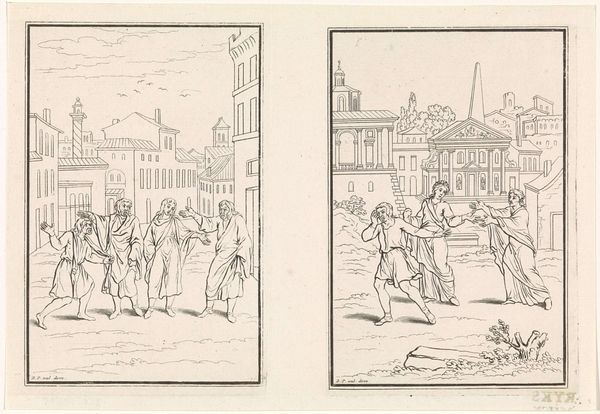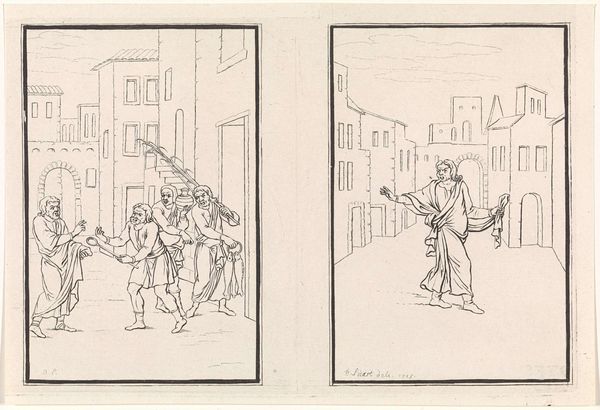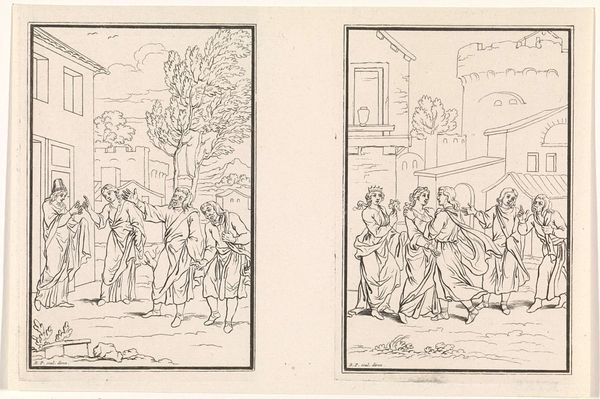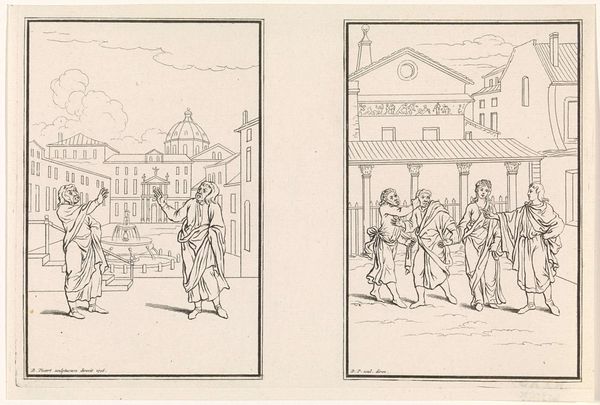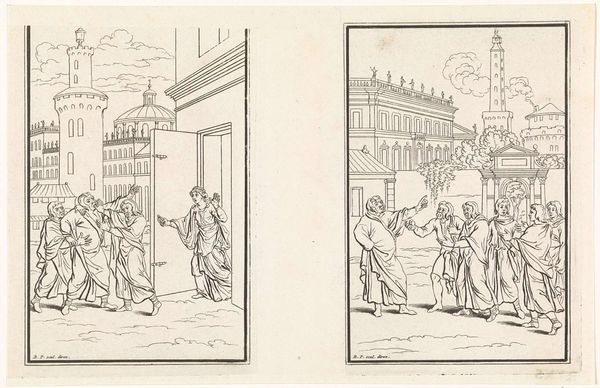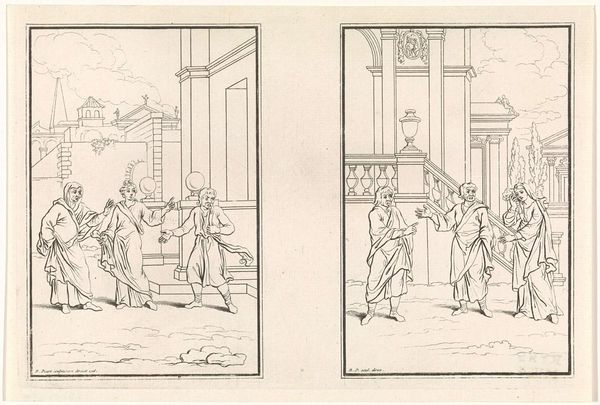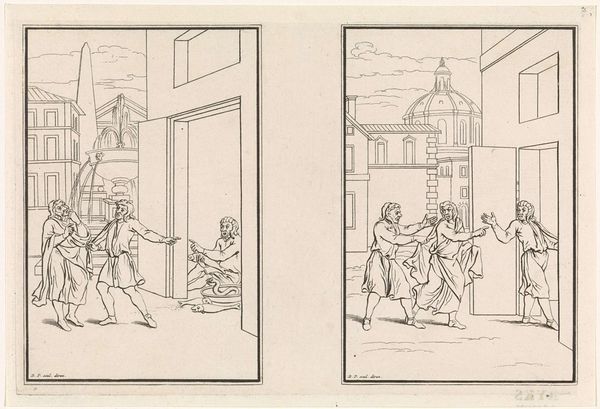
Dimensions: height 128 mm, width 197 mm
Copyright: Rijks Museum: Open Domain
Editor: We’re looking at “Twee scènes uit de komedie Adelphoe van Terentius” which translates to "Two scenes from the comedy Adelphoe by Terence," a pen and ink drawing from 1716-1718 by Bernard Picart. The stark, clean lines give it a classical, almost austere feel. What strikes you about it? Curator: Ah, Picart! He always knows how to both intrigue and tease! For me, it is about echoes of gestures across time. Those figures, plucked from a Roman comedy over a millennium before Picart's pen touched paper… they whisper to us about the universality of family, of conflict, of human folly. Imagine sitting in a theatre in ancient Rome, roaring with laughter. Editor: The gestures do seem exaggerated, theatrical almost! Curator: Exactly! This isn’t just a drawing; it's a portal. Picart, in his 18th-century way, is inviting us to be voyeurs in two time periods simultaneously. Feel the crispness of the Neoclassical lines, but remember the dusty, sun-baked streets of Rome where these dramas first played out. I’m curious – which scene draws you in more, and why? Editor: Probably the one on the right. The characters are more tightly packed, there's more of a sense of…confrontation, maybe? Curator: It's fascinating how a few pen strokes can evoke such emotion. He leaves so much unsaid. The magic isn’t just in what he shows us, but in what he invites us to imagine! Editor: I never would have thought of a black and white line drawing as theatrical before! I definitely see it now. Curator: Wonderful, yes. Perhaps art isn't always just the sum of the mediums. A line becomes emotion, shape turns into character... It's the best kind of alchemy!
Comments
No comments
Be the first to comment and join the conversation on the ultimate creative platform.




